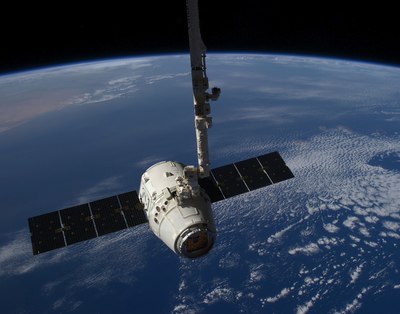NewSpace is in the American traditionby Gary Oleson
|
| New space is old America—it follows America’s traditional winning formula for developing new frontiers. |
In 2010, President Obama proposed a fundamental change in how NASA operates, shifting development of taxis to ferry astronauts to the International Space Station from the government to the private sector. Congress agreed, but last year gave the President less than half what he’d requested for these ventures: $406 million instead of $850 million, barely two percent of NASA’s $17.8 billion budget.
Critics of commercial space enterprises do not understand that “NewSpace,” as this new industry is often called, is grounded in a long history of exploration and economic growth. It is space done the way Americans have always developed new geographic and industrial frontiers. New space is old America—it follows America’s traditional winning formula for developing new frontiers.
From the beginning, the American formula was for private enterprise—with support from government—to develop new frontiers. European governments built the ships and funded the voyages that explored the New World. Private enterprises then founded the trading posts and settlements—often with financial support from government.
As soon as the American Revolution was won, the new federal government began vigorous programs to advance economic growth, trade, and industrial development. The nation explored its western frontiers and provided military support for traders and settlers who followed the explorers. Federal and state governments supported the construction of roads, then canals, then railroads. They also took an active role in supporting new industries and financing new industrial technologies.
In the last century, the American government successfully supported the growth and viability of the aviation industry via the National Advisory Committee for Aeronautics (NASA’s predecessor) and other agencies. The Internet is another example of a new frontier where government-supported development yielded a successful, revolutionary industry that has created new jobs and new wealth.
In today’s uncertain economic and budgetary climate, many question whether the space program has created sufficient return on investment and look to reduce our government’s financial investment in space. It is a fair question.
| A government program to explore space that is seen as expensive and does not result in production of new wealth cannot be sustained forever. |
Our space program has yielded several new industries so far, including telecommunications satellites, Earth remote sensing, and geolocation. It also contributed many technological, scientific, and medical advances that have improved our quality of life, but no one can say whether the same funds directed to research in other areas might have produced more. What will count in the future is intentional, reproducible creation of value that makes use of the unique qualities of space. The American people will always be entitled to ask, “What have you done for me lately?”
Though few people realize it, research on the ISS has begun to produce powerful results. For example, microgravity-based vaccine development conducted on the space station resulted in a Salmonella vaccine that is currently undergoing clinical trials. Research to develop vaccines against methicillin-resistant Staphylococcus aureus (MRSA), Streptococcus pneumonia, and other microbes is continuing. This is but the tip of the iceberg of potential space-based research. Value is there to be had.
American entrepreneurs are poised to lead the world in space development with everything from commercial taxi services to private space stations. No new authorizing legislation is needed for the government to do its part. In 1985, Congress mandated that NASA “seek and encourage, to the maximum extent possible, the fullest commercial use of space.”
However, the United States is in an age of budget austerity and NASA is just one adverse budget away from losing its human spaceflight program. A government program to explore space that is seen as expensive and does not result in production of new wealth cannot be sustained forever. Its mandate to support commercial development is NASA’s opportunity to both increase national revenue from space and lower its own costs. Supporting commercial use of space is, therefore, the most important thing NASA can do right now to assure its own future and the nation’s future in space.
| Government support for space commercialization isn’t just an option. If we are to have a future in space, it’s a necessity. |
If commercial enterprise can develop sustainable markets, whether from tourism or biomedical research or energy production, then nothing will stop our exploration of space. Launch costs, spacecraft costs, and operations costs will all drop with new innovations and rising demand. This will enable American civilian, military, and commercial space enterprises to accomplish more with less money.
New wealth flowing from space will sustain itself and generate both political motivation and financial support for NASA’s programs. Even more important, a booming commercial space industry would employ thousands of well-paid American workers and re-establish the United States as the dominant exporter of space goods and services. This kind of success brings a golden age of space within our reach.
History tells us that if our commercial space enterprises succeed, then there will be no end to American exploration of space. American tradition shows us the way. Government support for space commercialization isn’t just an option. If we are to have a future in space, it’s a necessity.
